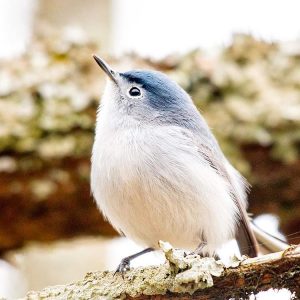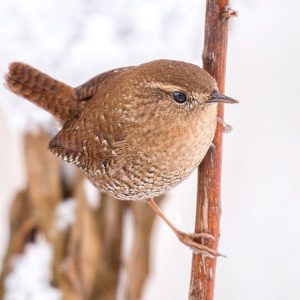I have been teaching a class on Ohio Birds since January during which we visit various field sites around Columbus to look for birds. One main goal is for students to be able to identify birds visually and acoustically by the end of the semester. As you may imagine the birds we have been seeing over this time period have changed quite a bit.
Not only the species have changed but also overall diversity. Venture out in January and you can call it a good day when you see 15-20 bird species. You want to choose your birding location carefully, a variety of habitats (lake, woodlot, open field, and bird feeder) will increase your numbers. These days however 30 species are the norm, it is migration season! While most of our winter guests such as Dark-eyed Junco and American Tree Sparrow have left us and gone north to their breeding grounds in Canada, many other species that spent the winter south, some as far as Argentina, are on their way to our temperate region.

Blue-gray Gnatcatcher. Photo by Christopher Collins, 2017, via www.fb.com/roguebirders
Have you seen a Blue-gray Gnatcatcher yet? Guess what this bird feeds on! Listen for their begging-like calls high in the tree tops. Their long tail and light-gray appearance are a good give-away.
Similarly flitting around in the tree tops are kinglets (family Regulidae). These tiny birds (even smaller than chickadees! they weigh only 10g or 2 nickels) seem to be constantly on the move. One of the two species that can be added to your Ohio list, the Golden-crowned Kinglet, even spends the winter with us. Truly an amazing feat in temperatures that can drop to zero Fahrenheit and below on occasions. A good photo of this species shows off their flashy bright yellow crest bordered by a black eyebrow stripe on each side.
My favorite though is the Ruby-crowned Kinglet, in particular because of its song. It starts out like its close-relative the Golden-crowned with some very high-pitched tsee notes, but then truly distinguishes itself through a jumble of notes, a musical twitter, that seems incredibly loud given the small size of this songster.
But do not underestimate the small! My all-time favorite, the Winter Wren, delivers the loudest song (per unit body weight) of all birds, a beautiful cascade of bubbly notes.

Winter Wren. Photo by Christopher Collins, 2016, via www.fb.com/roguebirders
While you may get lucky to hear this song in Ohio on occasion from one of the male Winter Wrens passing through, their song is commonly heard in the deciduous and evergreen forests of the north. By the way, did you know that the male hormone testosterone greatly influences bird song? As these males migrate and get ready for the breeding season, their testosterone levels increase and they start practicing their song – even though they are not setting up territories here or trying to attract females.
There are many ways to appreciate our songbirds. Since I am fascinated by their song I like to record their vocalizations and take these recordings back to our sound lab and look at them. We humans are just so visually oriented that even the song of a Winter Wren may look more beautiful to us than listening to its sound (This is of course not true if you have a musical ear or train yourself to listen carefully and pick out intricate details).
If you are interested in learning how to record bird songs, look at them at home and compare them to each other join me for a Sound Analysis workshop at the nature center at Battelle Darby Creek metro park on Saturday April 29 from 10:30-11:30 am. If you are an early riser, join us on a Bird Walk at 8 am that same day and listen to the bounty of birds singing at this time of the year.
Credits:
Sound descriptions based on the ones given by the Cornell Lab of Ornithology, All about Birds.
Thank you Christopher Collins and Jim McCormac for the bird photos.
All recordings are archived in the Borror Laboratory of Bioacoustics. More detailed information for each can be accessed online; just click on each species’ name:
Blue-gray Gnatcatcher – Golden-crowned Kinglet – Ruby-crowned Kinglet – Winter Wren
 About the Author: Angelika Nelson is curator of the Borror Laboratory of Bioacoustics and instructor of Ohio Birds each spring.
About the Author: Angelika Nelson is curator of the Borror Laboratory of Bioacoustics and instructor of Ohio Birds each spring.
*** Which birds are your favorites? ***





